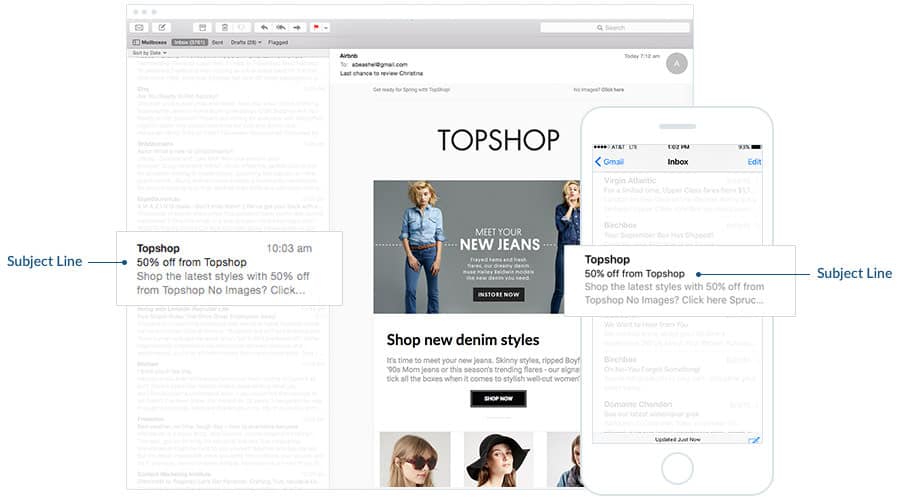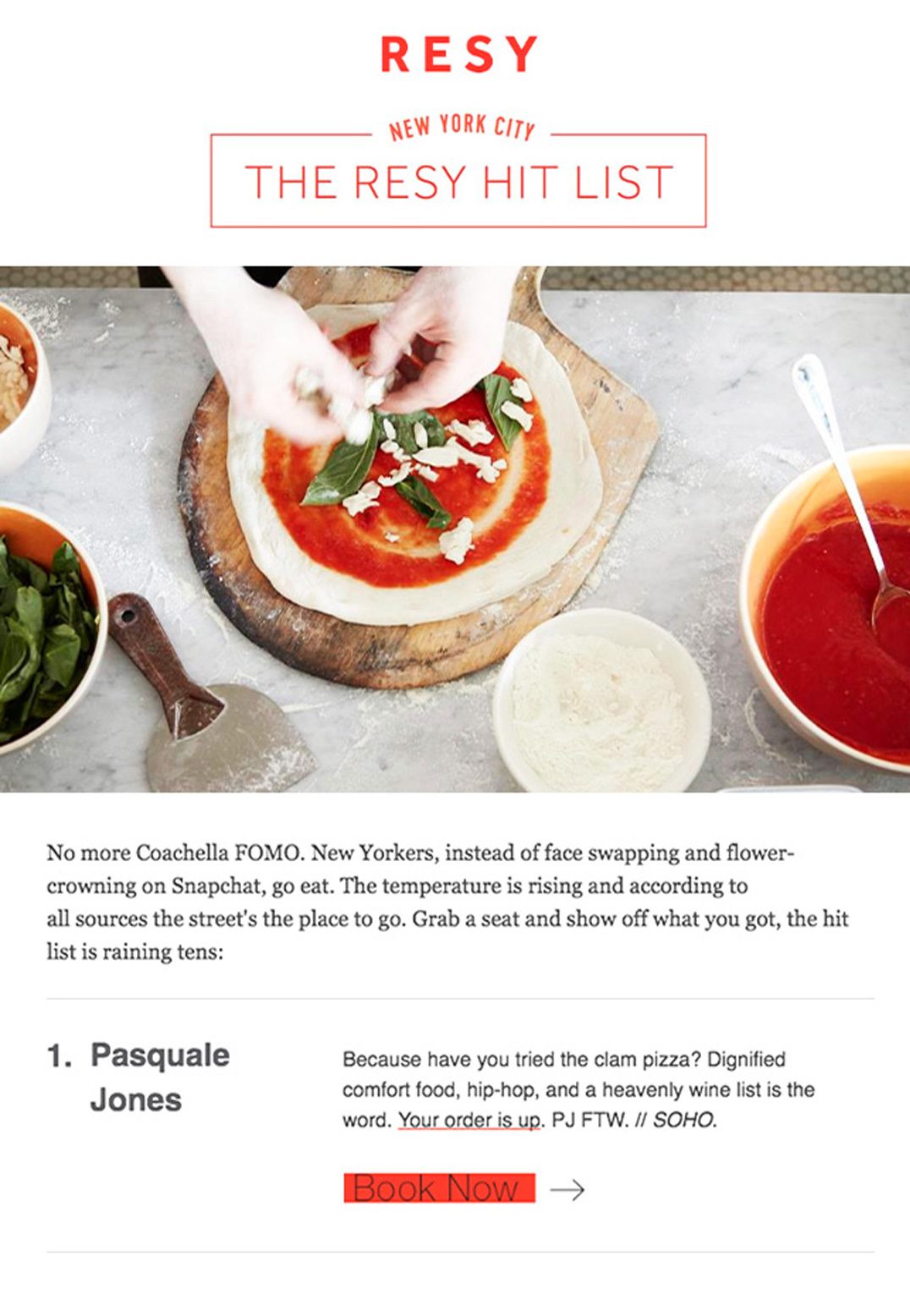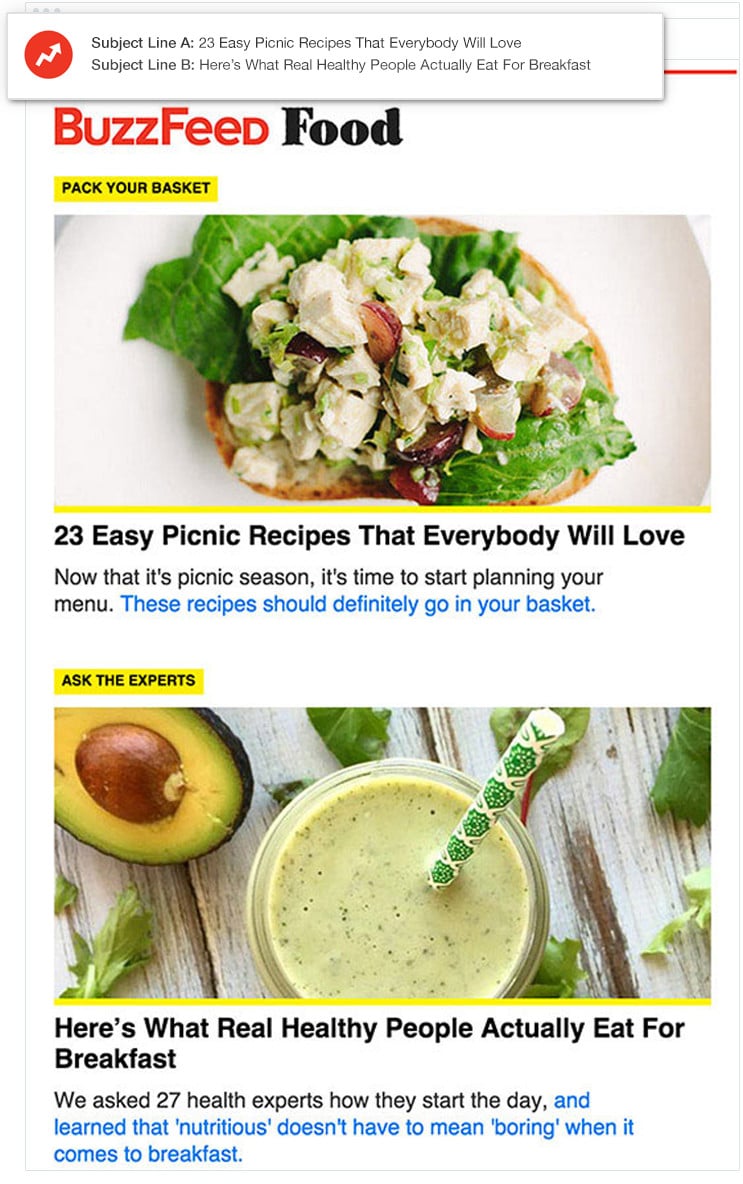The ways we measure success in marketing are always changing.
Maybe you’ve found that all it takes for decades of strategies and knowledge to become outdated is a few days away from the office. You put up your auto-response for a week of vacation, only to return to find algorithms, analytics, and all other trusted measures have already moved on.
But that’s exactly why we love email so much. While we’re always innovating and improving ways to connect with customers, the heart of email marketing—creating relationships—remains the same.
So when we begin to talk about email marketing click-through rates, or CTRs, what we’re measuring is customer engagement and interaction with each part of your email. When we focus on where and what each customer clicked, we can see what they loved about the message, including alluring hyperlinks, strong CTAs, and compelling images. CTRs also help you pinpoint the areas that could use improvement and see where your subscribers’ interests lie, allowing you to craft an even stronger campaign in the future.
While the end goal for your email marketing may be to improve your click-through rates, remember that the best way to get there is to concentrate on your customer and what they’d most like to receive in their inbox. Focus on the following five areas as tried-and-true ways to increase subscriber enjoyment and CTRs.
1. Make a good first impression with a strong subject line.
With emails, there are no second chances. Subject lines are your make-it-or-break-its, and they determine whether you’re earning a customer’s trust or a place in their junk folder. It’s important to grab their attention efficiently and creatively. Here’s how.
Choose your words carefully.
Choose a few words for your subject line— ideally five or less—and make them count. Because over half of all emails are opened on a mobile device, keeping copy short and to-the-point will ensure not only that your subject line isn’t cut off on any devices, but also that your message is simple enough to read on-the-go.
When you’re writing copy, don’t just think about what your brand has to say to the reader. Also consider where your reader is when they receive the message. Are they scrolling through their phone during their lunch break? Catching up on emails while riding the subway? Looking at their computer one last time before going to bed? TopShop does a great job of a short, simple, but thoroughly enticing subject line:

Use special characters.
Believe it or not, the emojis you’ve grown to love in text conversations are actually just as effective in emails. Although this may not be appropriate for every industry, we’ve found that brands using emojis have seen a 56% increase in their open rates. In many cases, using emojis shows that your brand is approachable and willing to have a little lighthearted fun.
By sending communication that feels more like a friend than a business, you’ll build trust with your potential customers, which means they’ll also be more willing to click through your content!
2. Maintain a consistent brand standard.
We love creating tools that make it easy for any business to send last-minute emails to their customers with exciting announcements and urgent updates. However, the immediate satisfaction of sending a message and checking it off your to-do list can sometimes override any brand standards you may have for other channels. Don’t let this happen!
More often than not, readers can tell when you’ve pieced something together, and that’s usually when they stop clicking. Definitely don’t let these areas slack on the job:
Design
While the design of your email should always feel creative and fresh, it should also be structured and strategic. Establish a brand standard or template for newsletters from your company, and make sure it fits into the bigger picture of your overarching marketing goals. For example, someone who reads your emails should have the same brand experience as someone who sees a billboard for your organization.
Make sure fonts, logos, and images are consistent with those being used on other mediums. When you set the reader up with a solid foundation of brand standard, they are able to focus on the new messaging and images you want them to see instead of figuring out who sent the email. Don’t forget to make sure your emails are responsive and able to be viewed across all devices. You wouldn’t want to unintentionally induce FOMO in your readers!
Copy
According to a study by Microsoft, the average adult attention span is eight seconds. That’s eight seconds to hook your subscriber—without overwhelming them—and convince them to keep clicking to read the rest of your message. No pressure, right?
With email marketing click-through rates, the heat is on, but this is no time to forget what our main goal is here: relationship-building.
When in doubt, personalization is almost always the way to go. In fact, when Adage asked marketers to choose one capability essential to marketing in the future, 33% said “personalization.” When paired with dynamic content, the ability to customize who sees each block of text in an email, personalization takes on a new level of click-ability. As readers engage with relevant, clear content that feels customized for who they are, where they live, what they do, and/or what they need, they’re much more likely to make it to the end of your email. Resy does a great job with local restaurant recommendations and a clean design to complement:

3. Create subscriber segments.
It’s true that thousands of messages and companies are fighting for your customers’ attention (and clicks) at any given time of day. However, subscribers will make time for things that are important and relevant to them, and that’s exactly where you come in.
In a study conducted by Janrain, 74% of customers expressed frustration with receiving content that has nothing to do with their interests. But your company? No frustration here, because you know your subscribers’ interests (or at least you will shortly) and will continue to prove it to them. See how Canopy sends personalized gift recommendations:

Collect the right data.
The key to successful segmentation is collecting customer data when they opt in for your emails. Determine the information that’s most important to your business and what you’d like to know about your ideal customers such as name, location, age, job/industry, and other interests.
Make sure to include these questions on the initial email subscription sign-up form. If you haven’t done this yet, no sweat! It’s never too late to add it and start learning more about your customers. We’ve found that marketers have had a 760% increase in revenue from segmented campaigns, so you could say we definitely recommend it!
Remain relevant.
Segmentation is the best way to organize your customers by interest, age, location, or other demographic. It can also help you micro-target really specific groups of consumers, offering them a special promotion for an item they’ve purchased before or introducing them to a product you already know they’ll like. If you’re not sure where to start, location is a great jumping off point for segmentation, and an easy way to say “We know what’s important to you in your neighborhood and want to help you make a great choice!”
4. Be willing to experiment.
When it comes to increasing click-through rates, A/B testing is your new best friend. This means sending different variations of your email campaign to separate groups of subscribers. This way, you can gather more data about the content your readers click most and continue to give them what they want.
What to test for
The opportunities are endless, but that doesn’t mean your test items should be, too. We recommend choosing one or two variables—your biggest ideas that you’re most curious about—and testing them first. This could include length, subject lines, content order, images, calls to action, or any other features you’d like to compare. See how BuzzFeed tests two similar subject lines:

Applying your results
A/B testing and not applying your results is like knowing that your customer’s favorite ice cream flavor is chocolate, yet you buy them a double-scoop of strawberry. After you send an initial test, build upon your findings (for example, if your subscribers engaged more with a particular image, see if the trend continues with similar images) and continue to conduct tests with the goal of finding out where (and why) your subscribers are clicking.
5. Automate your success.
Once you’ve learned more about your subscribers and have a solid content and design strategy, it’s time to start automating your efforts. Now that you know what will increase your click-through rates, you can schedule virtual meetings with your customers’ inboxes, celebrating important days with them and anticipating their needs along the way.
The one email guaranteed to boost CTRs
Also dubbed as “marketing’s secret weapon,” birthdays are the easiest (and most fun!) times to reach out to your subscribers and remind them who you are and why you care about them.
A study performed by ClickZ showed that birthday emails can list conversion rates by 60% over non-birthday email messages with the same offer. Collect your subscriber’s birthdate upon initial opt-in, then automate a birthday message for them on their special day! BarkBox even sends emails for dog birthdays.

Scale your efforts.
The more you’re able to replicate your genius efforts and create consistency with your inbox appearances, the more likely subscribers are to anticipate your emails and click through them.
After you’ve done all the hard work on the front end of collecting data and creating a campaign, create emails that will meet your customers at each point of their buyer’s journey, anticipating their needs and questions along the way. The more you’re one-step ahead of them, the more likely they are to engage and continue clicking.
Wrap up
While there are many ways to improve your email marketing click-through rates, the best thing to remember is that emails are simply a helpful tool to maintain relationships with your subscribers. The more you anticipate their needs and incorporate solutions into your emails, the more likely they are to click on and trust your content.





